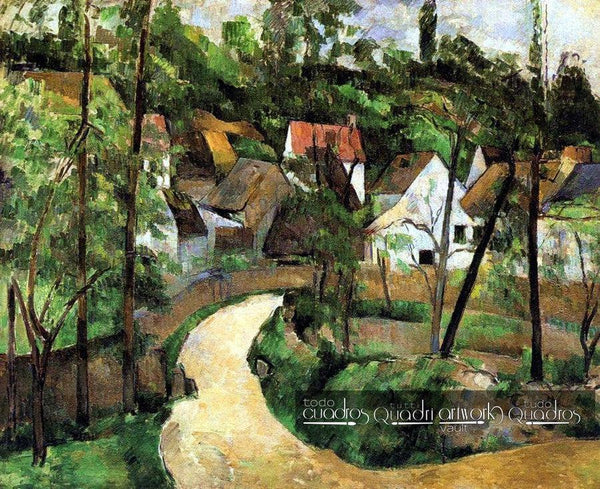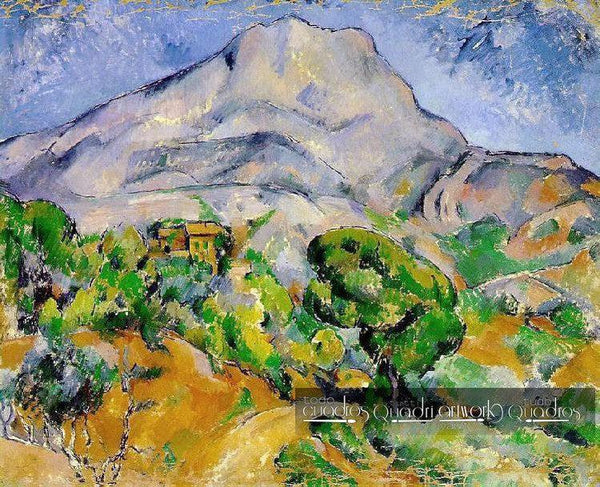Paul Cézanne
| Full name: | Paul Cézanne. |
|---|---|
| Nationality: | France. |
| Year of birth: | 1839, Aix-en-Provence, France. |
| Year of death: | 1906, Aix-en-Provence, France. |
| Style: | Impressionism and post-impressionism. |
Paul Cézanne was a French painter, one of the main fathers of Impressionism. According to many collectors, with Cézanne "everything" began, referring to the beginning of revolutionary movements that half a century later would converge in modernism.
He was born into a wealthy and Catholic family, though initially reluctant, his father financially supported him to prosper in his artistic career and also left him a substantial inheritance. Cézanne retained his Catholic beliefs throughout his life.
At the age of 22, he moved to Paris where he was a disciple of Camille Pissarro. He was not overly valued in his time, rather considered a second-tier artist, as evidenced by the many times he was rejected in galleries, as well as the artist's inability to make a living from his work.
Cézanne's Works
Cézanne's paintings are considered as the initiators of modern pictorial art. His works, appreciated posthumously, display forms and colors unthinkable for his time. He always fought to simplify shapes and experiment with ways of perceiving space, therefore the perspectives and proportions of his works are sometimes very peculiar.
His compositions, mostly constructed from patches of colors fitted together, give the paintings a moist, fantastic and "undefined" appearance.
-
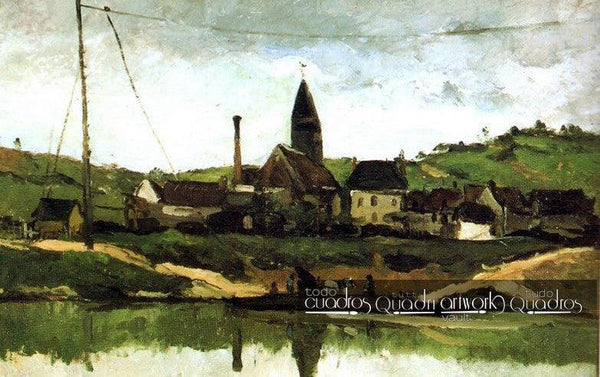
Author: Paul CézanneOriginal title: Vue de BonnieresEnglish title: View of BonnieresStyle: ImpressionismGenre: LandscapeType: PaintingTechnique: OilSupport: CanvasYear: 1866Located at: Fabre Museum, Montpellier
Cézanne surprises in this work with the simplicity, often referred to as "humility", in his brushwork. This type of domestic kitchen imagery, alongside landscapes, are the main inspirations for the painter.
-

Author: Paul CézanneTitle (English): Fruit and a Jug on a TableStyle: ImpressionismGenre: Still lifeType: PaintingTechnique: OilSupport: CanvasYear: 1890-1894Located at: Museum of Fine Arts Boston
Cézanne surprises in this work with the simplicity, often described as "humility", of his brushstroke. These kinds of domestic kitchen images, alongside landscapes, are the main inspirations for the painter.
-

Author: Paul CézanneOriginal title: Les Joueurs de cartesEnglish title: The Card PlayersStyle: ImpressionismType: PaintingTechnique: OilSupport: CanvasYear: 18941895Located in: Owned by the Royal Family of Qatar
Throughout his career, the artist painted a variety of scenes similar to The Card Players, including character sketches and different gaming rooms. This particular painting, being the final version, became known for being the most expensive painting in the world, reaching $250 million in 2011. Those familiar with Cézanne's work know that this painting represents one of his most elaborate compositions, with existing sketches by the artist and all sorts of figure and color tests.
-
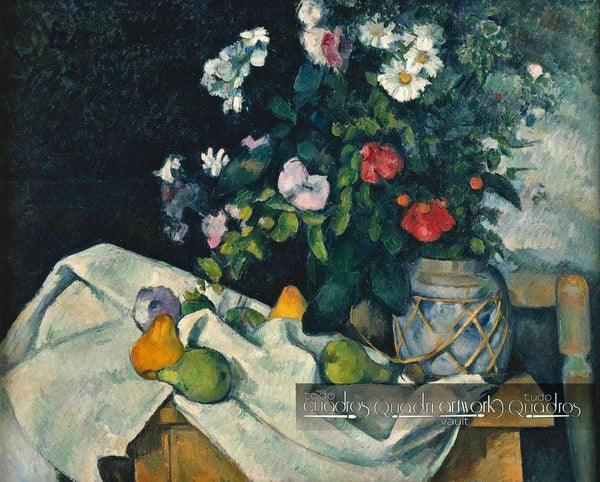
Author: Paul CézanneOriginal title: Fleurs dans un pot de gingembre et fruitsEnglish title: Still Life with Flowers and FruitStyle: ImpressionismGenre: Still LifeType: PaintingTechnique: OilSupport: CanvasYear: 1888-1890Located in: Alte National Galerie, Berlin
Among the large number of paintings based on the same topic, this one shows the most richness in detail and color. The composition is also considered unusual: on the left side, a black shadow from which a radiant tablecloth emerges and the color spots of the bouquet sparkle across the canvas.
The objects are: four pears, a plum, and a bouquet with daisies, poppies, and carnations. All placed on a stiffened tablecloth, typical of Cézanne's compositions.
-
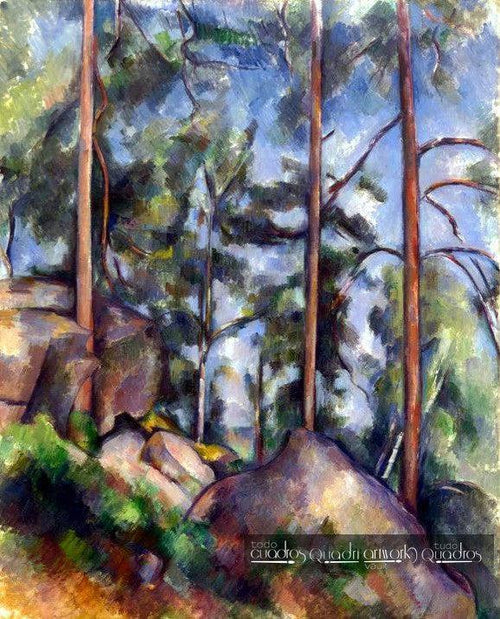
Author: Paul CézanneOriginal title: Pins et Rochers (Fontainebleau?)English title: Pines and RocksStyle: ImpressionismTheme: NatureType: PaintingTechnique: OilSupport: CanvasYear: 1897Located in: MoMA Museum, New York
It is not known for certain where and when this painting was created. Some experts assert that the work dates from 1897, based on the size and the amount of paint used in the brushstrokes. It is believed that the place depicted in this work is in the Forest of Fontainebleau or in a region near Paris, where Cézanne spent much time at the end of the 19th century.
-
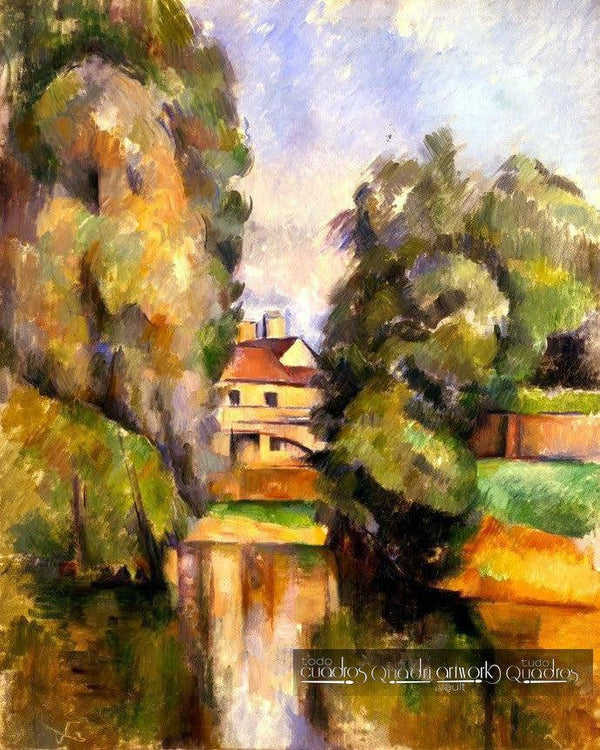
Author: Paul CézanneEnglish title: Country House by a RiverStyle: ImpressionismType: PaintingTechnique: OilSupport: CanvasYear: 1890Located in: Israel Museum, Jerusalem
This is a typical landscape of French Impressionism, arranged with slightly more simplified geometry. The coloration and distribution of elements are exceptional.
Cézanne had learned much from the most popular techniques of the time when executing strokes in the most genuine Impressionist style. This particular work clearly shows the influence of the French painter Camille Pissarro.
-

Author: Paul CézanneEnglish title: The PondStyle: ImpressionismType: PaintingTechnique: OilSupport: CanvasYear: 1879Located in: Museum of Fine Arts, Boston
The canvas presents a typical 19th-century French landscape, on the banks of a river in a rural setting.
Four human figures, arranged on a small hill with a pond at the base, each character experiencing the moment in their own way. The greens and blues used were the painter's favorite colors to represent nature.
-
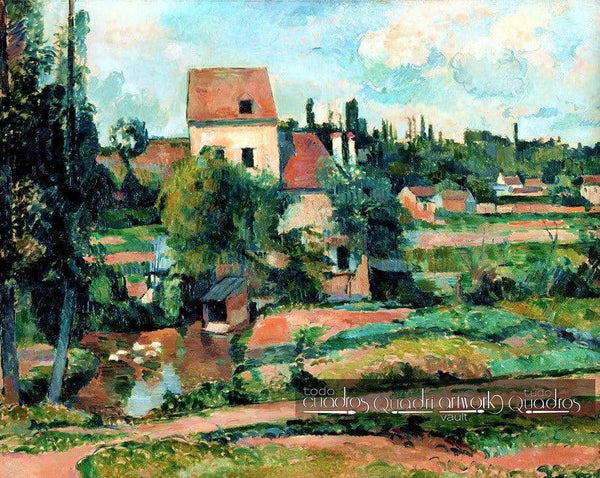
Author: Paul CézanneOriginal title: Le moulin sur la Couleuvre à PontoiseEnglish title: Mill on the Couleuvre at PontoiseStyle: ImpressionismType: PaintingTechnique: OilSupport: CanvasYear: 1881Located at: Alte National Galerie, Berlin
Depicts one of the many mills in the Pontoise region, which in that era relied on the grain trade for their existence.
-

Author: Paul CézanneOriginal title: Table, Serviette et FruitEnglish title: Table, Napkin, and FruitStyle: ImpressionismType: PaintingTechnique: OilSupport: CanvasYear: 1900Located at: Barnes Foundation, Philadelphia
This is one of the many paintings where the artist depicts fruits arranged in a home setting, with the color and composition of this particular work standing out for its beauty.
-
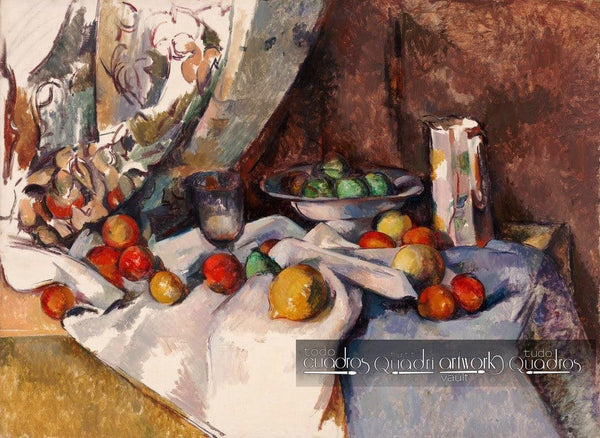
Author: Paul CézanneOriginal title: Nature morteEnglish title: Still Life with ApplesStyle: ImpressionismType: PaintingTechnique: OilSupport: CanvasYear: 1895-1898Located at: MoMA, New York
Though he returned to this artistic genre repeatedly throughout his career, it was during this period that Cézanne was most prolific in these types of paintings: domestic scenes, especially related to kitchen elements.
Fruits, jars, napkins, and curtains arranged harmoniously; the depth of field, centered on the observer, along with the representation of light and space, make this work judged by experts as worthy of a genius.
-
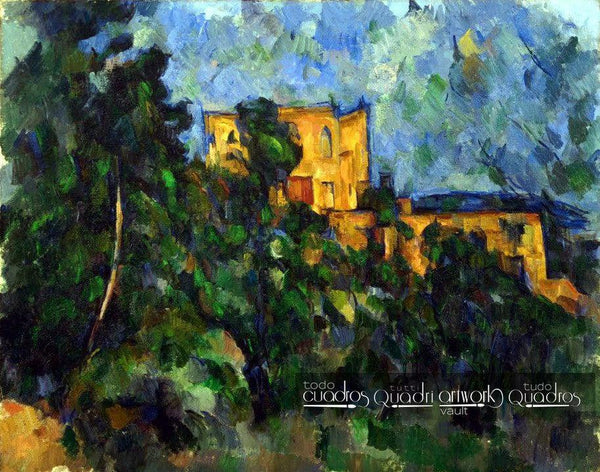
Author: Paul CézanneOriginal title: Château NoirStyle: ImpressionismType: PaintingTechnique: OilSupport: CanvasYear: 1903-1904Located at: MoMA, New York
A neo-Gothic structure that captivated Cézanne, located near Aix, France. It was painted by the artist in 1904. This painting was once owned by Claude Monet, who hung it in his bedroom in Giverny.
-
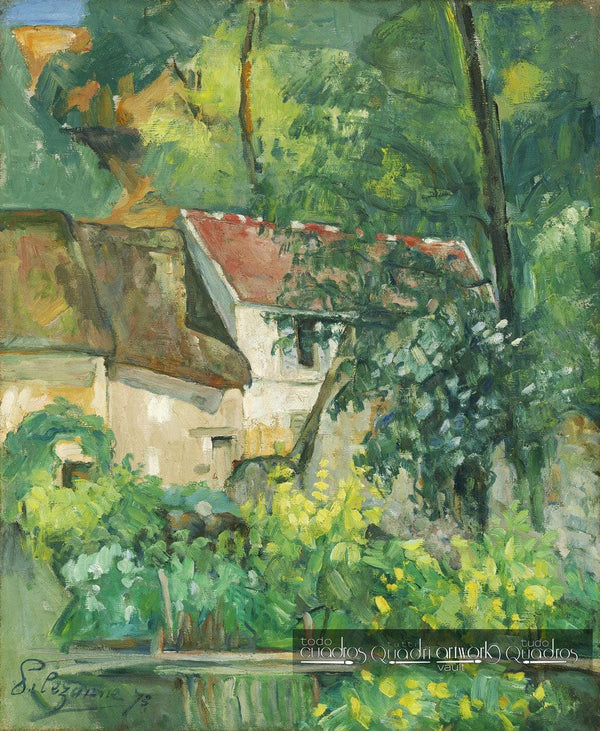
Author: Paul CézanneEnglish title: House of Père LacroixStyle: ImpressionismType: PaintingTechnique: OilSupport: CanvasYear: 1873Located at: National Gallery of Art, Washington, D.C., USA
Depicts a house hidden behind the generous foliage of trees, with thick and diffuse brushstrokes.
-

Author: Paul CézanneEnglish title: The Tree by the BendStyle: ImpressionismType: PaintingTechnique: OilSupport: CanvasYear: 1881-1882Located at: Israel Museum, Jerusalem
This is a bicolor landscape (green and beige) of the French countryside.
The composition is made up of endless oil stains that outline the different figures of the countryside: dirt roads, small hills, trees, and shrubs. The horizon of the painting (quite high) is irregular and is formed by a green vegetal mantle that gives way to a blue and pink sky.
See it in the store in the section Cézanne oil paintings
Related famous painters in the store:
↑Back to top


